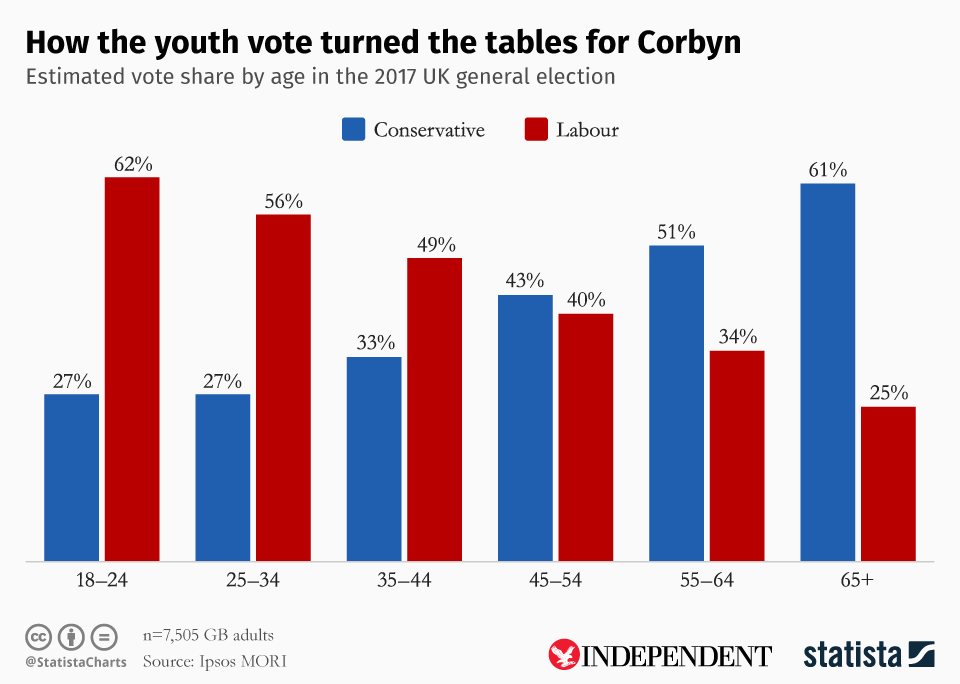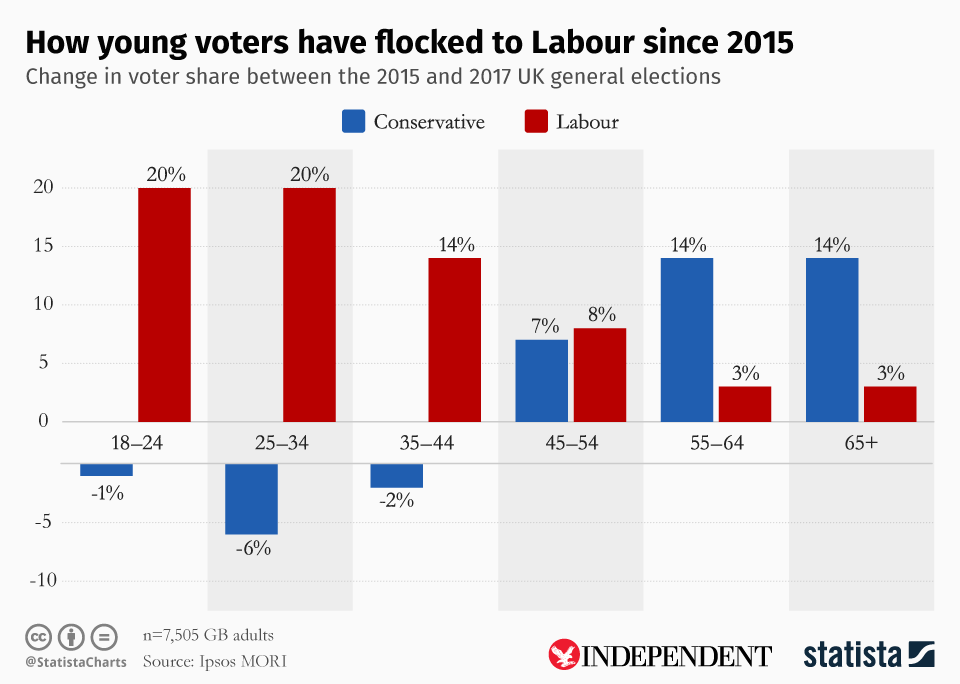Jeremy Corbyn's election surge fuelled by biggest youth turnout in 25 years, new figures reveal
'Exceptional' increase in support for Labour among young people denied Theresa May a majority
Jeremy Corbyn’s unexpectedly strong performance in the general election was caused by the highest turnout among young people since 1992, new data has revealed.
Turnout in the 8 June vote is estimated to have been 64 per cent among 18-24 year olds – a 16 per cent increase on the 2015 general election.
The figure is higher than any election since 1992, when 67 per cent of 18-24 year olds are thought to have cast a ballot, according to new analysis by Ipsos MORI.
The rise explains the swing to Labour that gave Jeremy Corbyn a surprise election surge and denied Theresa May a parliamentary majority. The 9.5 per cent increase in Labour’s vote share since 2015 can be explained entirely by the party’s rising popularity among under-44s. In contrast, the Tories extended their lead among over-55s.
As a result, Britain was more divided by age at the 2017 election than at any point since Ipsos began collecting data in 1979. Labour now has a 35 per cent advantage over the Conservatives among 18-24s, while the Tories lead by 36 points among over-65s – a gap between young and old of a staggering 71 points.

The data suggests that age has replaced class as the biggest determiner of how people vote, with the gap between voters of different social classes narrowing more than ever before. The 2017 election saw Labour achieve its highest level of support among ABC1 middle class voters, while the Tories did better among C2DE working class voters than at any stage since the data began being collected.
Pollsters described Labour’s increase in support among young people as “exceptional”.
“Labour’s always had electoral success with young people but 2017 saw an exceptional rise in their support, especially amongst young women, tied together with higher turnout compared to recent general elections – although similar to the EU referendum”, Glenn Gottfried, Research Manager at Ipsos MORI, told The Independent.

“However, this wasn’t the only contributing factor to Labour’s election surge, keeping in mind the Conservative vote share increased overall as well. They also increased their support amongst those aged 25-44, the middle class and people paying mortgages on their home.”
The Ipsos study also revealed that Labour extended its lead among ethnic minority voters to a staggering 54 points, while turnout among BAME people was up six per cent since 2015.
Whether voters supported Remain or Leave in the EU referendum also proved to be a good indicator of how they voted in the general election. Labour led the Tories by 14 points among Remainers but the Conservatives had a 7 per cent lead among Leave backers.
Join our commenting forum
Join thought-provoking conversations, follow other Independent readers and see their replies
Comments